From June to July 2021, Cape Town-based artist Adele van Heerden spent a month in residency at the David Krut Workshop (DKW) at Arts on Main in Johannesburg making a body of prints based on her experience of the city.She also worked on works in other media that appeared in her 2021 exhibition, Infinite detail (4 July – 3 August 2021) at Lizamore & Associates.
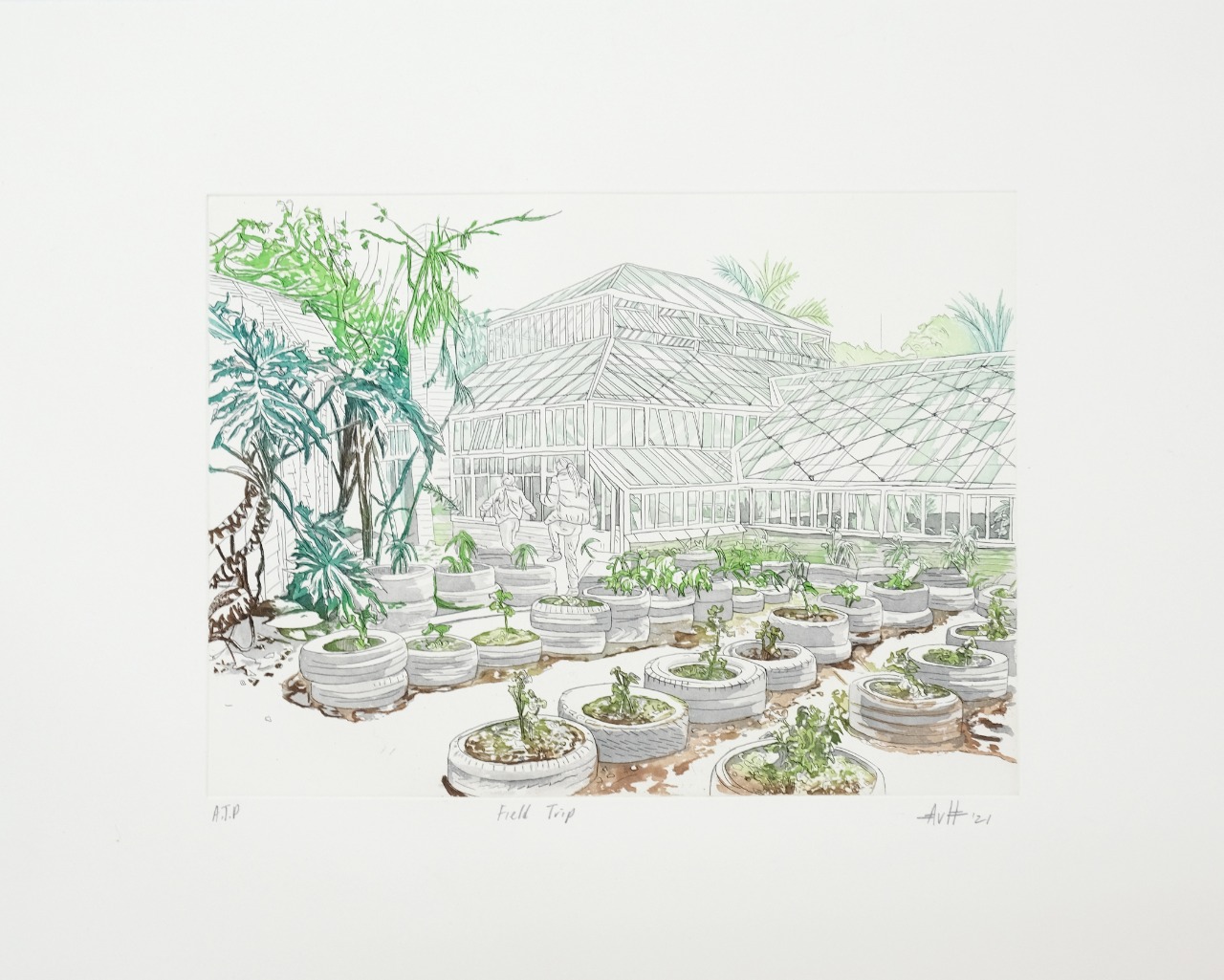
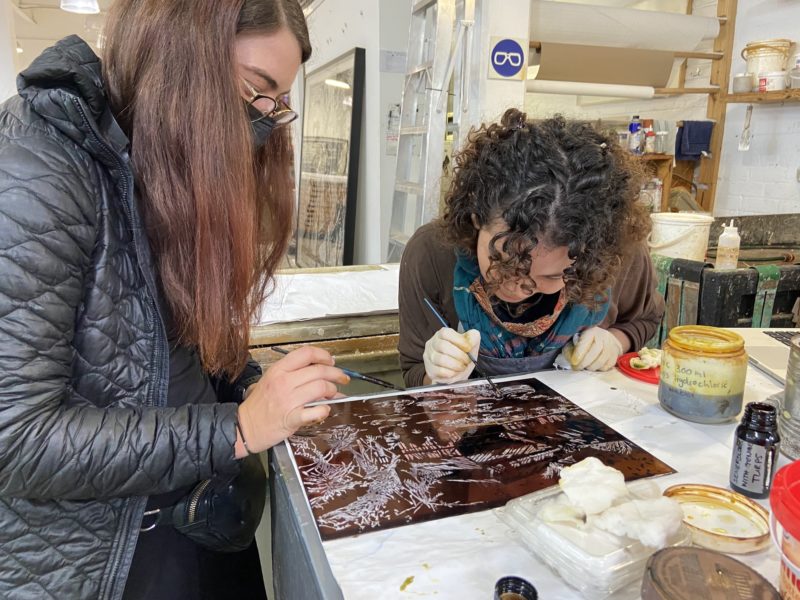
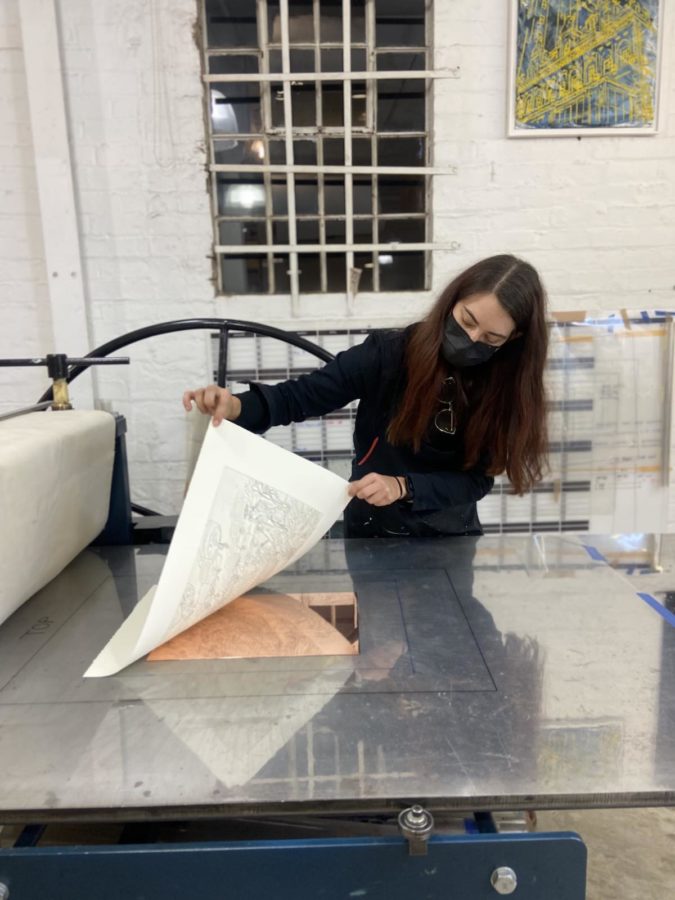
Unlike many artists visiting the big smoke of Joburg, who produce work that focusses on the gridded, geometric and building-centric urban landscape of the city, Adele sought an urban jungle of a different kind. As a self-proclaimed lover of “human-made spaces which work in symbiosis with greenery and plants” Johannesburg proved to be a feast for the mind and eyes. Joburg is often heralded as the largest man-made forest, and is also home to many a plant-filled nook and cranny. The works made during Adele’s time in Joburg tell the story of the inspiration she sought, and the way these images unfolded in the workshop, alongside her paintings.
During Adele’s first week at the workshop, loadshedding at the studio presented a good opportunity to explore some of the city, and Adele took a trip with some of the studio team to the Greenhouse Project in Joubert Park. In the heart of downtown Joburg, nestled within the grit, the Greenhouse Project is a beacon of sustainability, utilising green building and design, renewable energy and recycling, and organic food gardening underpinned by permaculture principles to support the surrounding community. It hit the mark for Adele, allowing a valuable insight into the ingenious ways in which plants and people cohabit in the city. Reference images from this visit, replete with the geometric lines of the buildings, softened by an abundance of foliage, served as a base for some of the works produced over the course of the next few weeks.
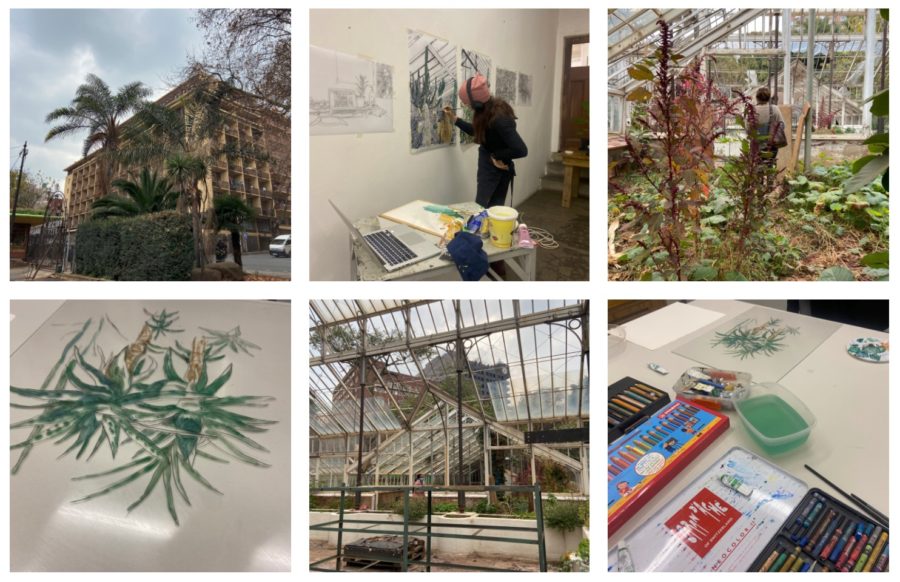
Adele collaborated with DKW printers Roxy Kaczmarek and Kim-Lee Loggenberg. The graphic novel like two-plate etching titled Field Trip, 2021, produced by Adele sees her first time experimenting with intaglio techniques of liftground (commonly known as sugarlift) and spitbite.
The Greenhouse is surrounded by tall trees and high density residential buildings reminiscent of beehives, which contributes further to an “enclosed” and “secret” feel. The final atmosphere of the print feels like the illustration on the cover of a book or graphic novel. It was based on an image I took of the David Krut Printmakers entering the greenhouse. It felt like a new adventure, an urban archeological expedition, entering a space hidden in the city center.
Adele van Heerden, 2021
Adele began working on the image with a graphic line drawing in hardground. Having used the technique at Ruth Prowse School of Art , Adele jumped at the chance to smoke the plate – a process where the waxy ground is rolled out onto the copper plate, the plate is then turned upside down and the flame of a candle is used to deposit carbon soot into the wax, blackening and hardening the ground. This allows the artist to see their lines more clearly as they draw.
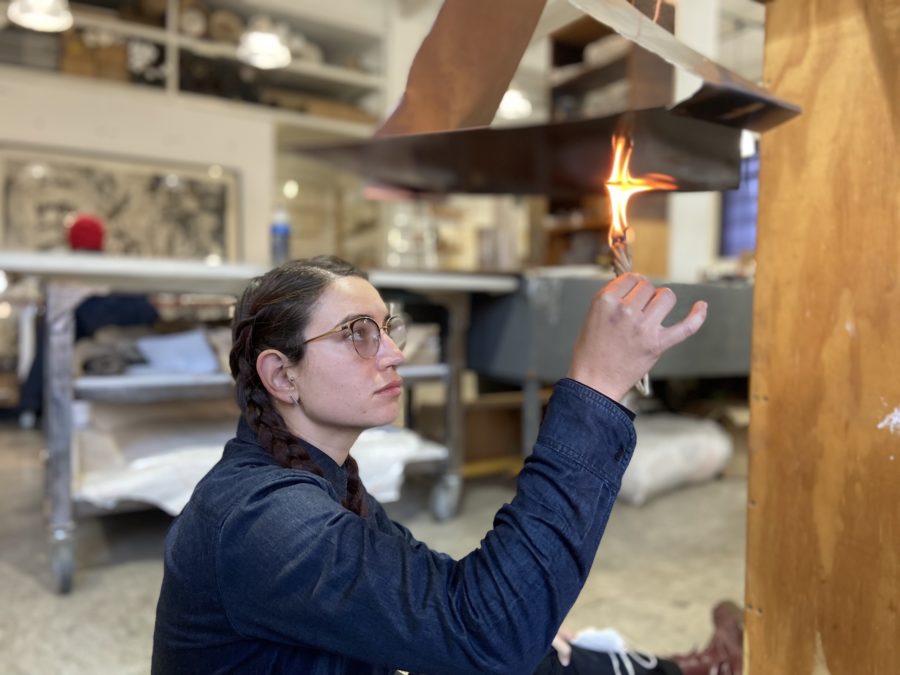
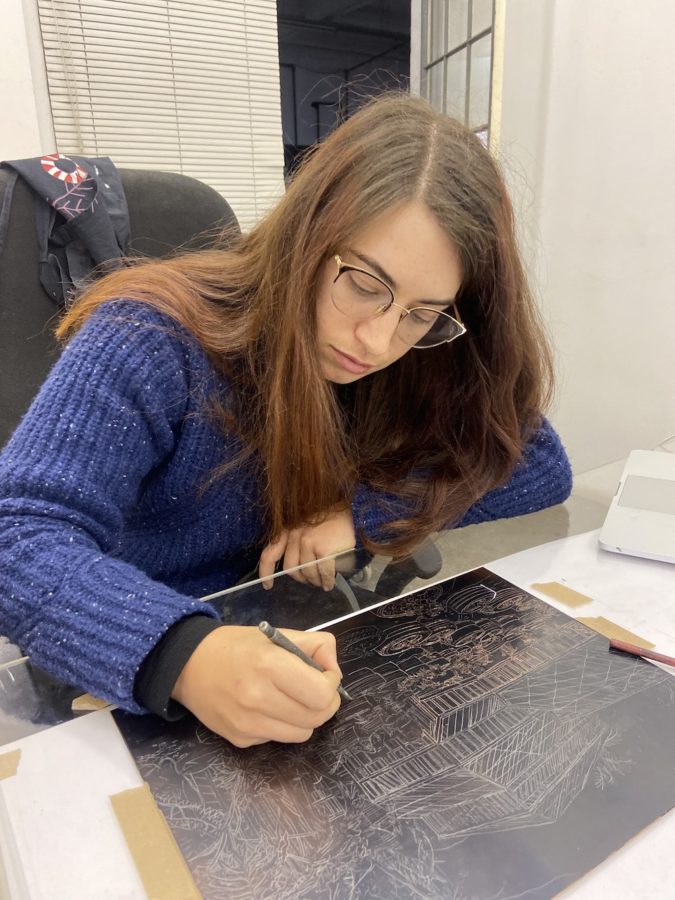


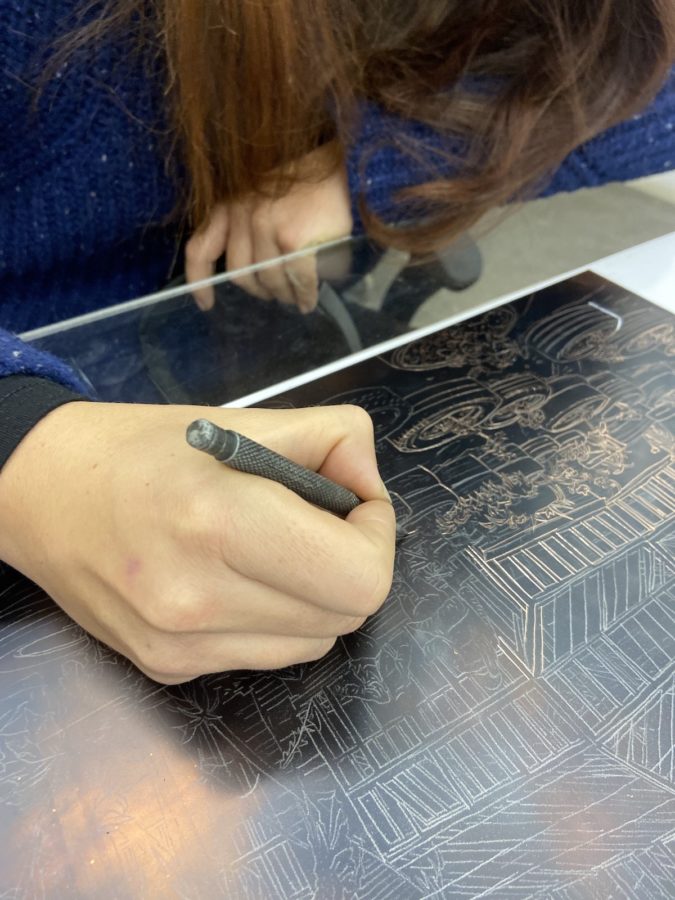
Adele then began work on the second plate which would hold the colour. These marks are made in the technique of liftground (sometimes known as sugarlift), where the artist paints with a Gum Arabic and gouache solution onto the plate. The solution is covered in a ground and lifted off using warm water to reveal areas of the plate to etch. Adele then painted with the ferric chloride acid – in a technique called spitbite – in order to etch tonal variation into the lifted areas. The effect, when inked up in multiple colours (a la poupeé) gives the image a feeling of hand colouring with watercolour.
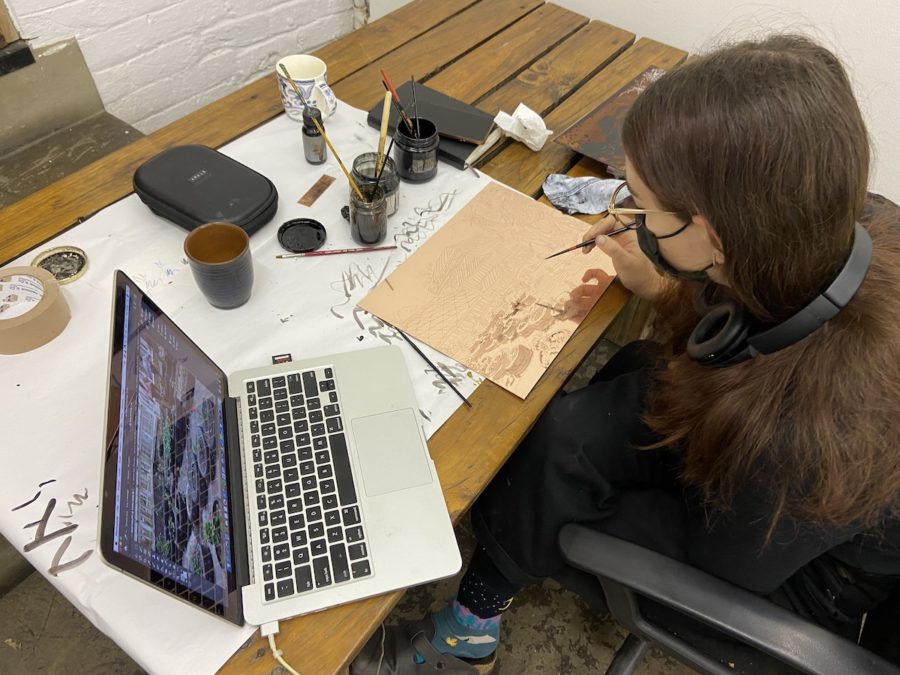
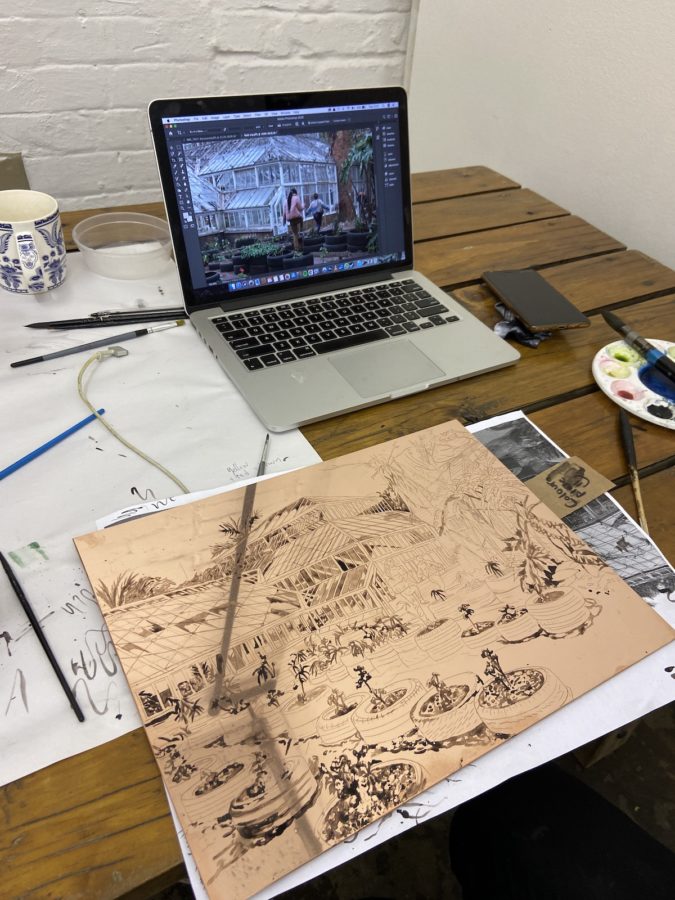
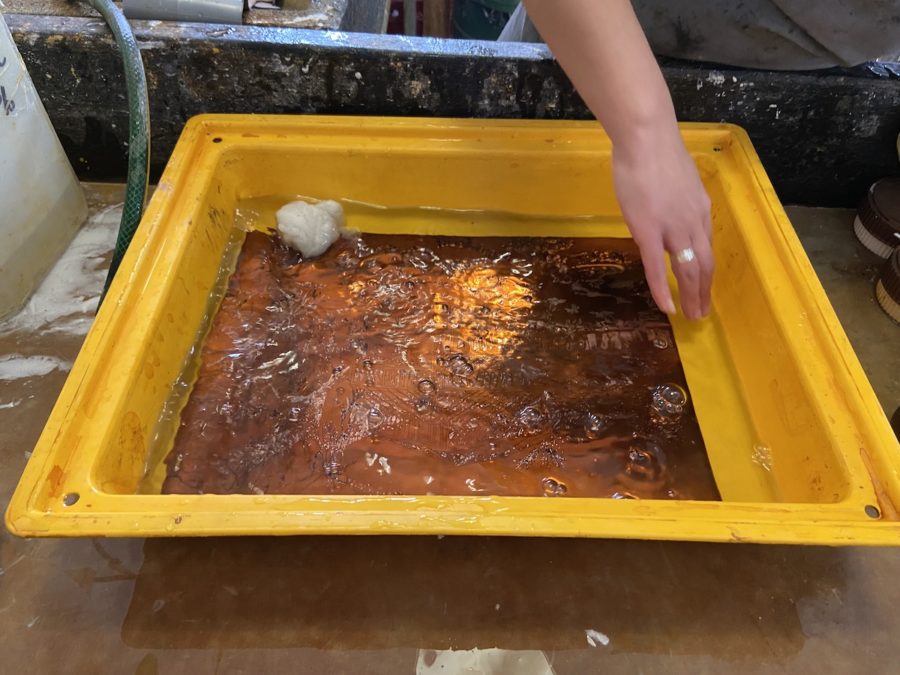
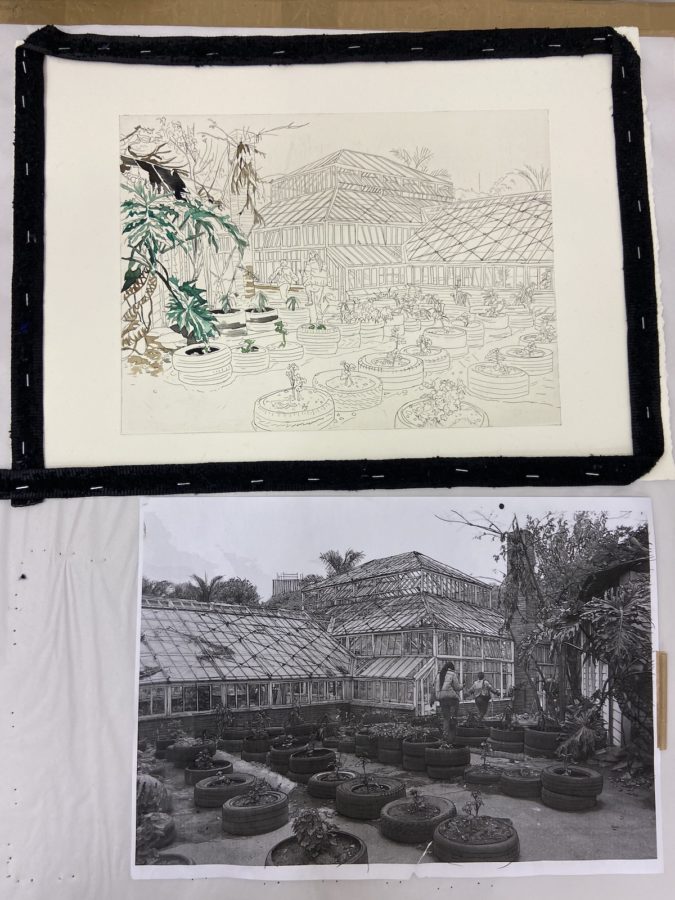


The etching is an edition of 12 prints and is currently being editioned. Visit Adele’s Residency Viewing Room to find out more about her time at the David Krut Workshop and the beautiful unique works she produced. Contact [email protected] to receive updates on availability and prices for the works.
